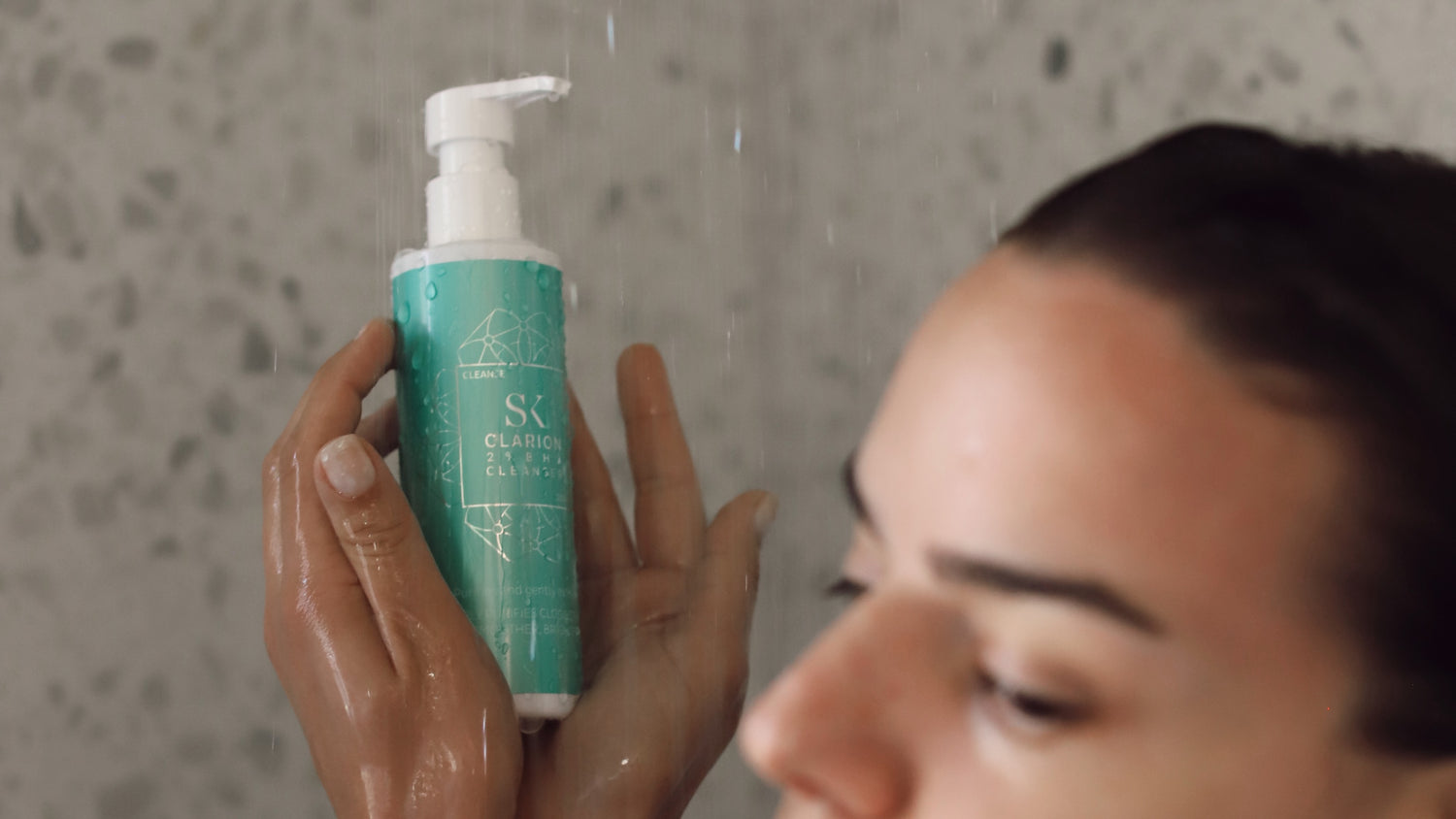Acne can appear in different forms, from mild ones such as blackheads and comedones, to severe, inflamed and cystic acne that requires the help of a dermatologist. Although it is a mild form, comedones can actually lead to the formation of an inflammatory form of acne, so it is extremely important to understand how to recognize them, what are the causes of pore clogging and their formation, and how to treat them with a proper approach to skin care.
What are comedones and how do they form?
Comedones are a non-inflammatory form of acne that occurs in the pores next to the hair follicle. The pilosebaceous follicle is made up of a hair follicle and an associated sebaceous gland that secretes sebum onto the surface of the skin. In the hair follicle, the process of desquamation, or the peeling off of dead skin cells, takes place, and this very process plays an important role in the formation of clogged pores and, consequently, the formation of comedones. Namely, in normal follicles, dead skin cells with sebum are excreted on the surface of the skin. On the other hand, with a disturbed function of the hair canal, there is a danger that, due to increased secretion of sebum and follicular hyperkeratosis, which cause follicle occlusion, dead skin cells and sebum remain in the follicle, leading to clogging of the pores, which is the basis for the formation of comedones - "plug" in layman's terms.
Initially, a microcomedone is formed from a clogged pore, which is not visible to the naked eye. A microcomedone can remain unnoticed for a long time and even disappear, or turn into an open or closed comedone. Open comedones , or blackheads, appear as black dots because the sebum in contact with air oxidizes and takes on a dark color, and inflammatory changes rarely arise from them. Closed comedones are skin-colored papules, and they are located deeper in the follicle because sebum cannot be secreted to the surface of the skin due to blockage of the outlet channel. Inflammatory acne can easily develop from closed comedones because inside the closed comedone, with a lack of oxygen, ideal conditions are created for the reproduction of the bacterium C. acnes , which secretes enzymes that break down lipid components in sebum into free fatty acids. Free fatty acids have an irritating effect on the skin and stimulate an inflammatory effect, which eventually leads to the formation of inflammatory acne.
How to treat comedones?
When treating comedones, a proper cleaning and skin care routine is a key factor. Double cleansing in the evening routine , using Atomic + Amphibian or Atomic + Clarion 2% BHA cleanser , allows the removal of makeup, SPF, impurities and excess sebum without drying the skin, keeping the skin's hydrolipidic barrier balanced.

Skin prone to comedones requires the use of chemical exfoliants . Salicylic acid is the only fat-soluble acid that allows it to penetrate through blockages and break the bonds that hold together dead skin cells and the lipid components of sebum, cleaning the pores from the inside. In the treatment of comedones, the combination of AHA and BHA acids in the product proved to be ideal. Clarion is a night serum for exfoliation in which salicylic and glycolic acids act synergistically to prevent the formation of clogged pores. In addition to acids, in the treatment of comedones niacinamide , which is the star of the Tria Light treatment cream , and topical retinoids , which act via nuclear receptors, treat existing comedones and prevent the formation of new ones, also proved to be effective.
In the prevention of comedones, in addition to active ingredients, it is also important that the products do not contain irritants and that they do not contribute to the clogging of pores, that is, that they are non-occlusive. Fatty and heavy creams should be avoided , and a layered routine and light textures , such as Hydra B or Spectra serum emulsions, are recommended instead. It is also necessary to pay attention to the selection of liquid powder , which, due to its occlusive role, is often the cause of clogged pores.

If your skin is prone to comedones, it is advisable to periodically perform a mechanical facial cleaning by a professional in order to thoroughly clean the pores. Finally, don't forget about one very important little thing - SPF . Protection against UV radiation is always recommended, but especially when using chemical exfoliants that stimulate cell turnover and exfoliate the surface cells of the skin, making the skin more sensitive to the harmful effects of the sun.
Literature:
- Toyoda, M. & Morohashi, M. (2001). Pathogenesis of acne. Medical electron microscopy : official journal of the Clinical Electron Microscopy Society of Japan. 34. 29-40.
- Cunliffe, William & Holland, D & Jeremy, A. (2004). Comedone formation: Etiology, clinical presentation, and treatment. Clinics in dermatology. 22. 367-74.
- Wiegmann, David & Haddad, Lori. (2020). Two is better than one: The combined effects of glycolic acid and salicylic acid on acne-related disorders. Journal of Cosmetic Dermatology. 19.

